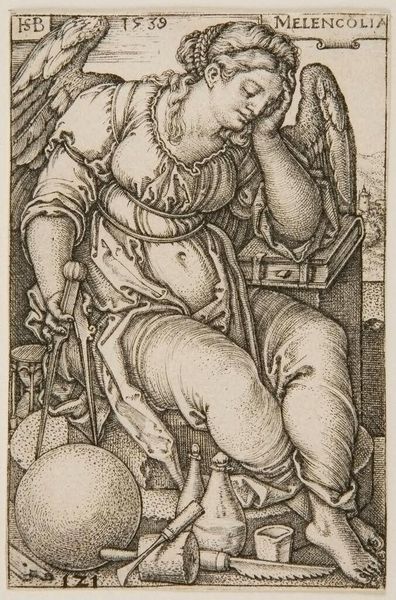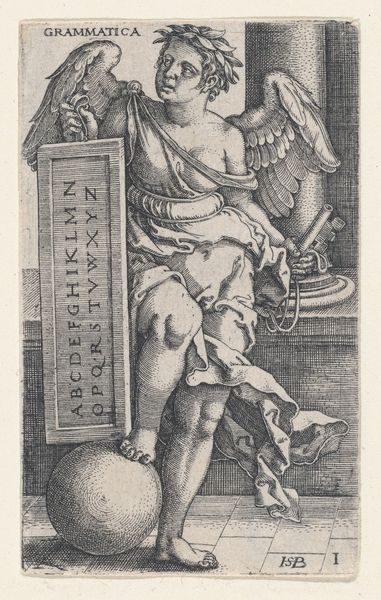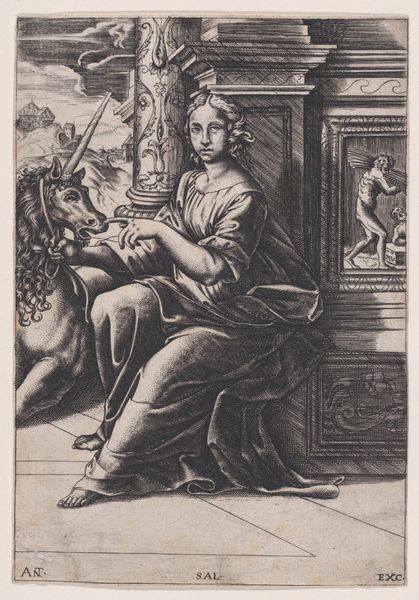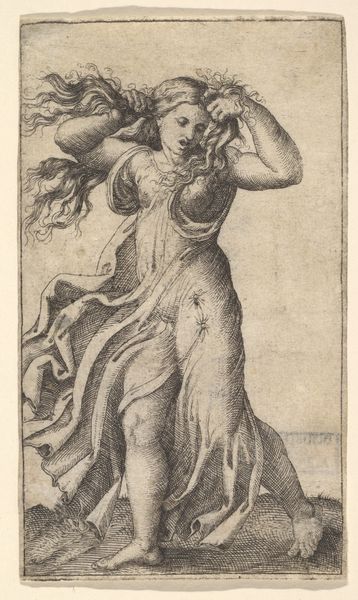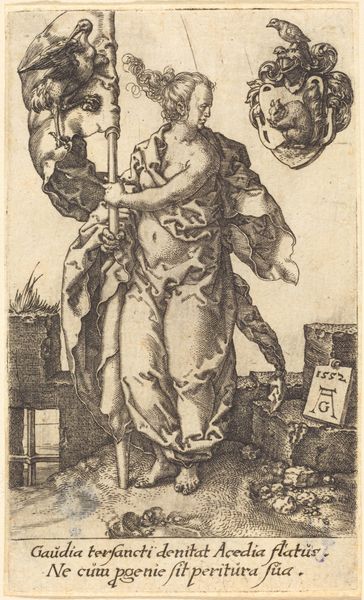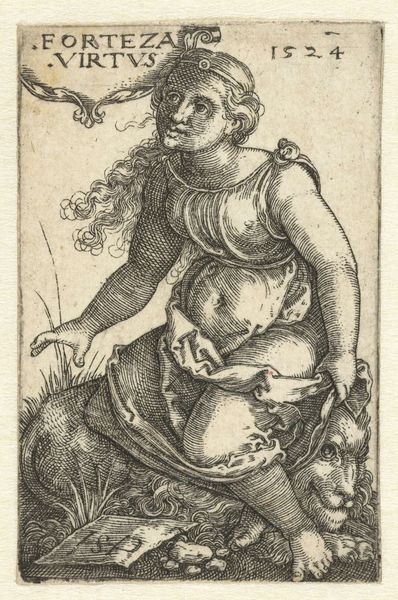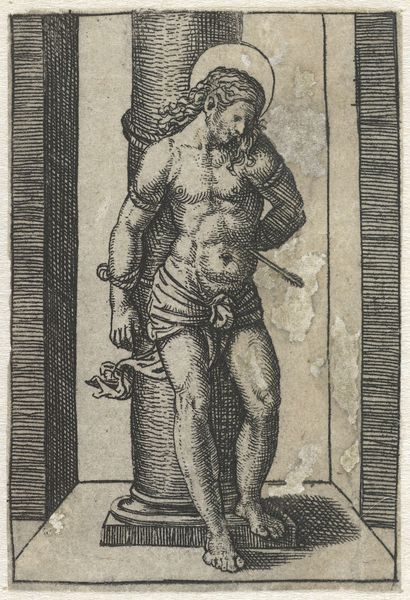
print, engraving
#
allegory
# print
#
figuration
#
11_renaissance
#
line
#
history-painting
#
northern-renaissance
#
engraving
Dimensions: plate: 7.8 x 5.1 cm (3 1/16 x 2 in.) sheet: 8.1 x 5.4 cm (3 3/16 x 2 1/8 in.)
Copyright: National Gallery of Art: CC0 1.0
Editor: So here we have Sebald Beham's engraving, *Melancholia*, from 1539. She really looks defeated. All those objects scattered around, the tools…it’s like potential energy, totally unused. What do you see in this piece? Curator: A beautifully rendered stasis. It's not just sadness, it's an allegory for creative block. That winged figure, representing inspiration, is surrounded by instruments of science and craft, yet she's paralyzed. That’s a sharp, precise engraving style—check out all those lines building up tone and texture! I see this as Sebald's own battle. Is he critiquing, you think, perhaps, or simply expressing shared humanity through this symbolic rendering of intellectual frustration? Editor: It hadn't occurred to me to consider his frustrations, that personal investment. But you're right; it has this deeply introspective feel now that I think about it. The engraving style too--all that detail now looks like...thought. Laborious thought. I didn't even realize prints could *do* that. Curator: The piece hums with artistic self-doubt, or at least it does for me. Think of those Renaissance anxieties: The pursuit of knowledge colliding with limitations. And look at the hourglass; is it empty, a taunt to wasted potential, or perhaps half-full? Editor: Wow. I feel like I need to spend a lot more time letting artworks frustrate *me*. Curator: Precisely! Now, when it fills the frame of our eyes, what new images do *you* envision within it, born of reflection?
Comments
No comments
Be the first to comment and join the conversation on the ultimate creative platform.
